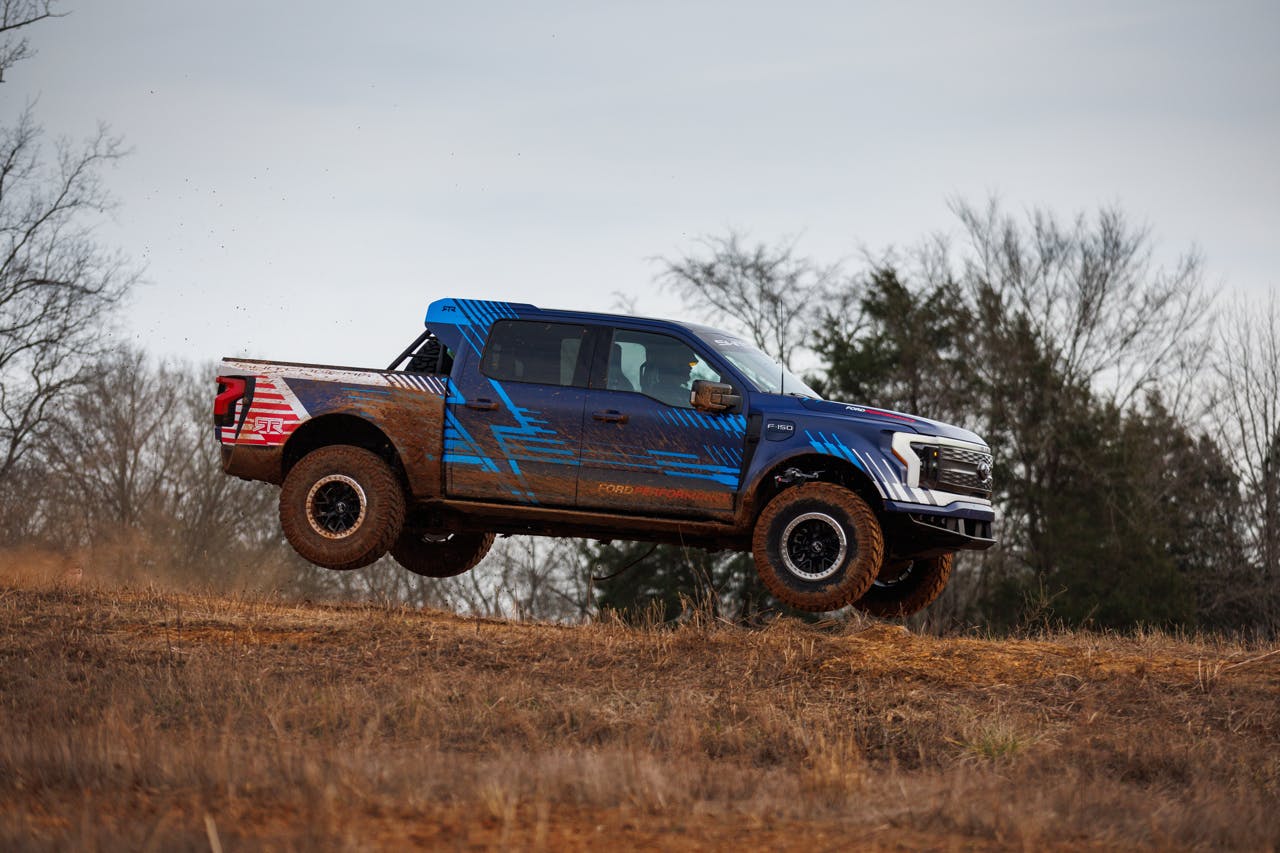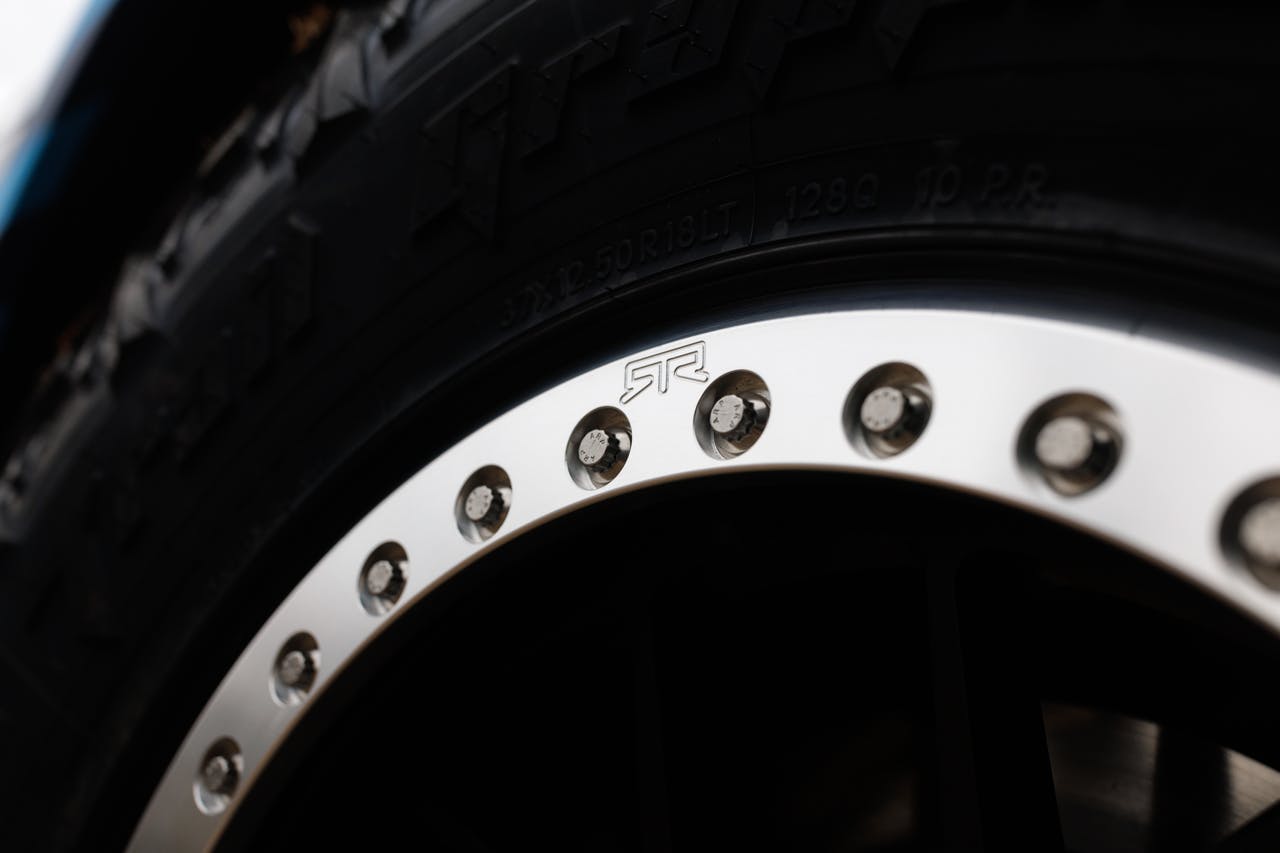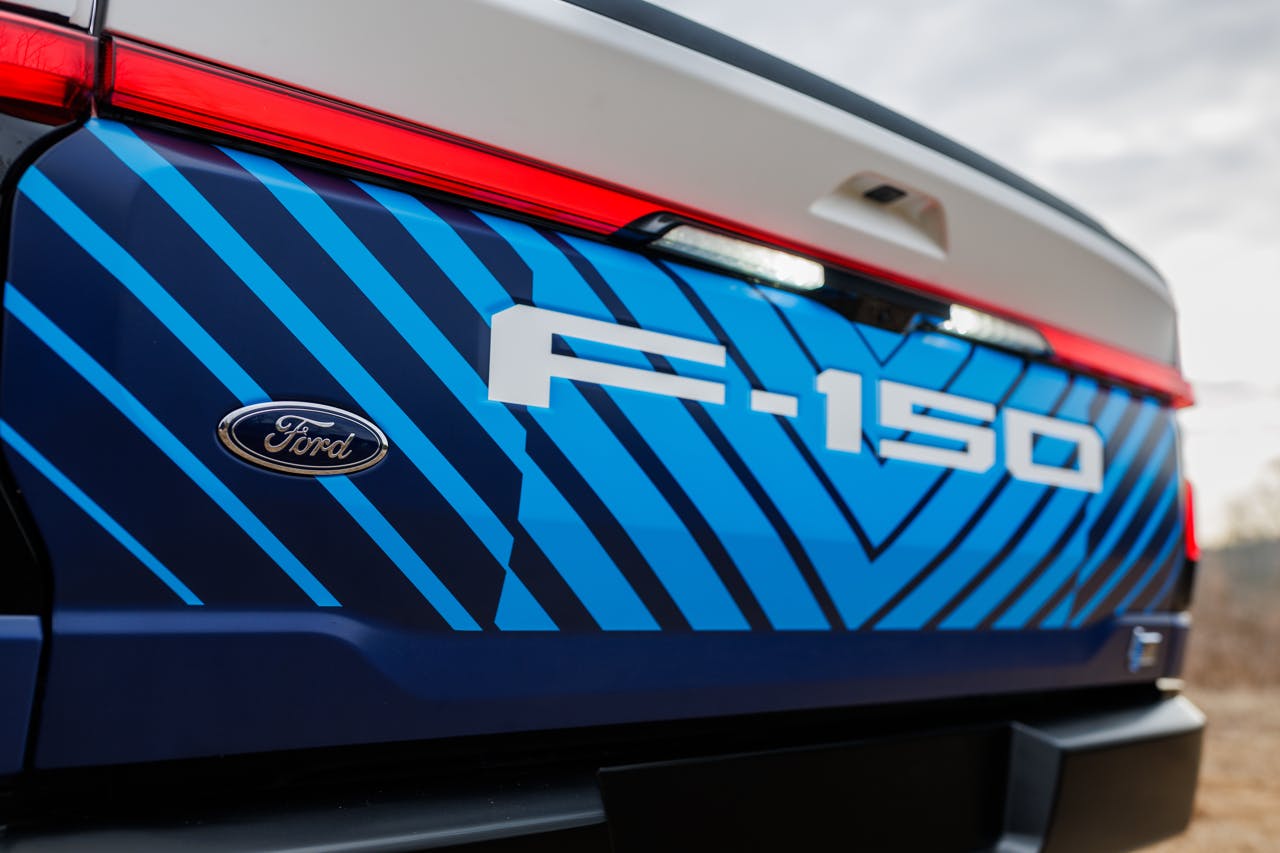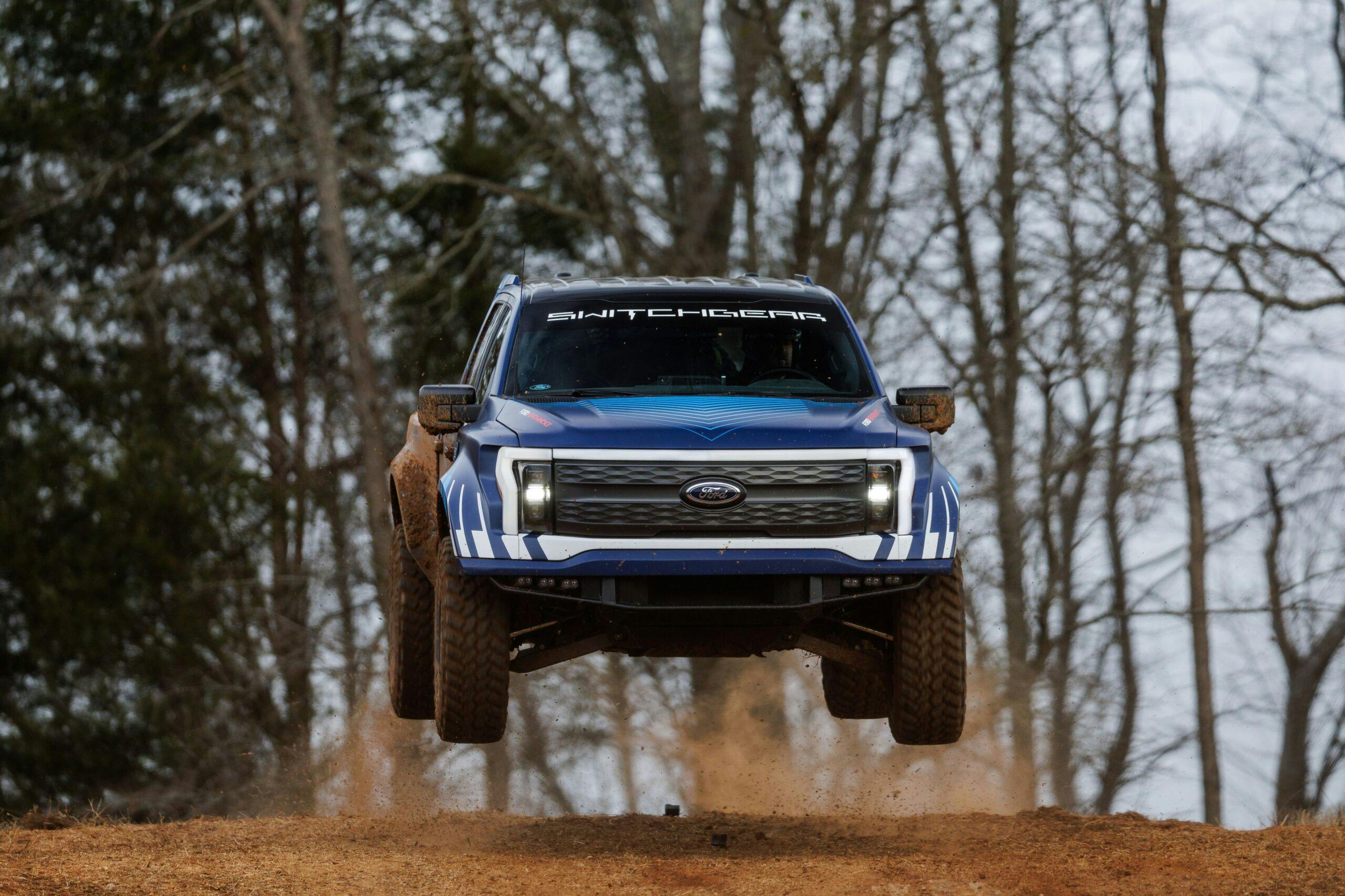Media | Articles
Ford’s F-150 Lightning Switchgear Gives Raptor EV Vibes
When it debuted for the 2010 model year, the Ford F-150 Raptor redefined what an off-road truck could be. With its long-travel suspension and high-output engine, the Raptor was more streetable Baja truck than slow rock-crawler. Buyers thought high-speed off-roading in a truck with a factory warranty was pretty sick, and the Raptor was a huge success.
On the contrary, the all-electric F-150 Lightning has not been so successful. Whether it’s the high base price, EV skepticism from traditional truck buyers, or a combination of both, Ford has had trouble moving the Lighting. Ford reported sales of the Lightning fell 46 percent in the third quarter of last year.
Hoping to drum up more interest in the Lightning, Ford showed off a desert-racing version of the EV truck at last week’s Chicago Auto Show. The concept, dubbed Switchgear, is the latest in the line of Ford Performance’s EV demonstrators. It was still covered in dirt from its time giving rides to members of the press at the King of the Hammers off-road racing event in Johnson Valley, California.

“We use these things [the EV demonstrators] to really test the limits and sometimes go beyond the limits so we can send all those improvements and learnings and transfer that technology to the rest of the products in our lineup,” said Sriram Pakkam, head of F1 and EV Demonstrators at Ford. Indeed, the Switchgear, which was designed and built in collaboration with drifter Vaughn Gittin Jr.’s RTR Vehicles, uses a stock Lightning XLT as a base. None of the drivetrain components were touched and no extra shielding around the battery was needed. “We’re really, really pushing the limits on our stock Lightning components by going really fast off-road.”
However, the suspension and bodywork are decidedly not factory. “Everything we did was built around the tires,” explained Pakkam. The custom, carbon-fiber front and rear fenders are about six inches wider than stock to fit massive 37×12.5R18 Nitto Ridge Grappler tires—chosen for extra track width and stability at high off-road speeds. The front and rear bumpers are also unique to the Switchgear and improve approach and departure angles.
A new suspension system aids ground clearance and travel. Interestingly, the extended control arms, which are based on the components from Ford’s 4400 and 4600 desert racers, are the only custom suspension bits. The coilover springs and Fox 3-inch internal bypass shock absorbers are off-the-shelf, so an enterprising Lightning owner could theoretically bolt on battery-powered Baja performance.
Pakkam wouldn’t comment on whether or not the Switchgear was built in preparation for an EV Raptor, but if they were to build a production model, this demonstrator seems like a pretty good start. If the Switchgear is how Ford is planning to make EVs more exciting, the future is in good hands.
***
Marketplace
Buy and sell classics with confidence
Check out the Hagerty Media homepage so you don’t miss a single story, or better yet, bookmark it. To get our best stories delivered right to your inbox, subscribe to our newsletters.











































So not only an expensive and impractical bad for the environment truck but a too heavy, more expensive impractical truck.
If you had any concern for the environmental impact of the automobile, you wouldn’t own a car. Your anti-EV talking points sound like repurposed anti-airbag arguments, or the anti-seatbelt rants from back in the day. Depending on which model you choose the weight difference between an ICE F150 and a Lightning can be as low as 260lbs…or the average weight of your standard red state 5th grader.
Yeah, MisterLou, let’s keep supporting China while they mine the raw materials in Africa using slave labor and causing deforestation and habitat destruction and water contamination because of improper handling of mine tailings and wastewater so as to release toxic substances into rivers and streams. This information comes from studies from The Wilson Center as well as other reports I’ve read. The raw materials are then taken to China for processing in facilities that have little or no environmental safeguards. When the batteries reach the end of their useful life, they cannot be recycled so end up in landfills probably causing more pollution to groundwater. And don’t forget the intense fires EVs are prone to requiring thousands of gallons of water to extinguish. This is all done so people can virtue signal their concern for the environment by driving EVs that don’t perform well in cold weather. Doesn’t sound like a good economic or environmentally sound option to me.
If your going to complain about lithium mining like that, you better not be using a call phone, laptop or any one of the other 200 lithium powered devices that have become the daily norm.
This is America, no one cares about owning anything practical. Especially anybody considering anything Raptor branded…
Lets take a truck that isn’t really good at truck things besides crawling through suburbia and make it more pricey and less useful? Sounds great. I guess you will be able to have more fun offroad so there is that I guess.